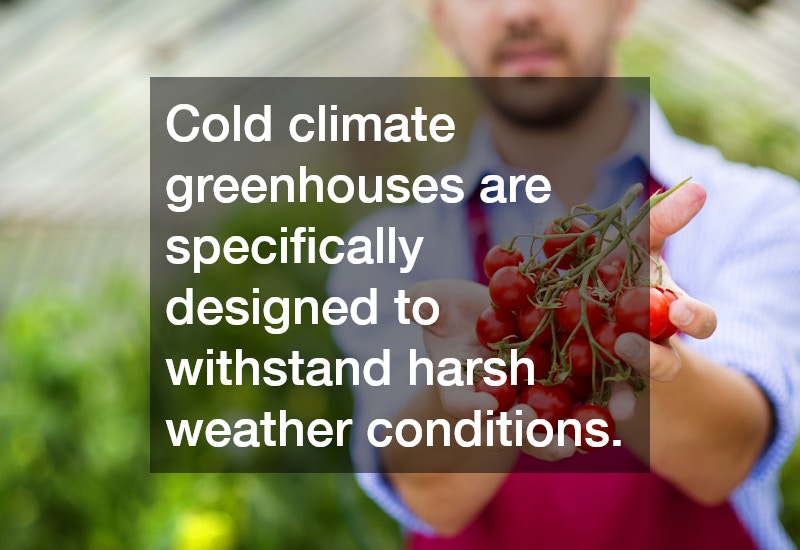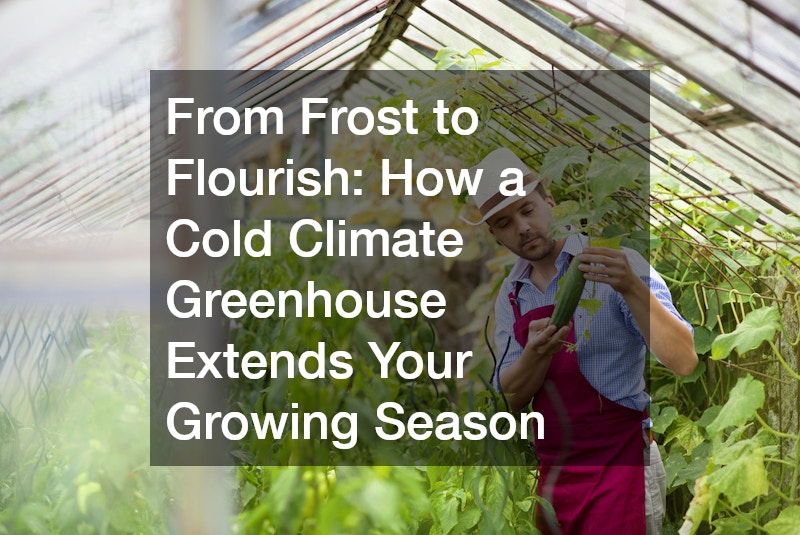
From Frost to Flourish: How a Cold Climate Greenhouse Extends Your Growing Season
Gardening in regions with short growing seasons can be quite challenging due to harsh winters and an early onset of frost. Fortunately, using a greenhouse for cold climates can overcome these constraints and offer a fruitful solution for avid gardeners looking to extend the growing season. By creating a controlled environment, greenhouses allow for the cultivation of a variety of crops all year round, even in the coldest climates where snow and ice typically reign.
What is a Cold Climate Greenhouse?
Design and Structure
Cold climate greenhouses are specifically designed to withstand harsh weather conditions and optimize heat retention. Features such as strategic insulation layers, efficient glazing, and thoughtful orientation are essential to their effectiveness.
The glazing materials, often double or even triple-layered, play a crucial role in capturing and retaining sunlight while keeping cold drafts at bay. In addition, the structure is often oriented to face south to maximize exposure to winter sunlight, which is vital for photosynthesis. This thoughtful design not only provides warmth but also ensures that precious sunlight aids in growing efforts.
Materials and Construction
The materials used in constructing a cold climate greenhouse contribute significantly to its ability to maintain a warm environment amidst the cold. Polycarbonate panels are a popular choice due to their superior heat-retention properties and durability compared to traditional glass. Other construction materials may include insulated metal frames and even wooden beams treated to withstand moisture and prolong lifespan. Combined, these materials form a robust barrier against the cold, effectively locking in warmth and creating a microclimate conducive for plant growth.
How Does a Greenhouse Extend the Growing Season?
Temperature Regulation
Cold climate greenhouses are adept at maintaining an optimal temperature range for plants to thrive even in winter months. The use of thermal mass, such as water barrels, bricks, or stone, absorbs heat during the day and releases it slowly over the night, keeping the temperature stable. Additionally, efficient insulation is critical for heat retention, ensuring that external cold doesn’t seep in and internal warmth isn’t lost. This regulated environment allows gardeners to start planting weeks before the last frost and continue harvesting long after the first frost.
Light Management
Maximizing sunlight exposure is critical in cold climates where daylight hours are limited, and greenhouses facilitate this through specialized glazing and orientation. Reflective surfaces can also be employed to direct more sunlight onto the plants, ensuring no precious light is wasted. In addition to natural sunlight, cold climate greenhouses may utilize supplemental lighting systems, such as LED grow lights, to extend daylight hours artificially. This combination of natural and artificial light supports uninterrupted photosynthesis, crucial for the growth and development of plants.
What Can You Grow in a Cold Climate Greenhouse?
Crop Selection
When selecting crops for a cold climate greenhouse, consider varieties that are cold-hardy yet greatly benefit from extended seasons. Leafy greens such as kale, spinach, and Swiss chard are excellent choices due to their resilience to cold and quick maturity rates. Root vegetables, including carrots and beets, also thrive in cooler greenhouse environments, taking advantage of the extended seasons to grow larger. Additionally, choosing plant varieties such as certain herbs and winter-hardy lettuces ensures productive growth across the seasons.
Seasonal Planting Strategies
Implementing strategic planting schedules can maximize your use of a cold climate greenhouse by extending the periods of planting and harvesting. For instance, starting seeds indoors and transplanting them to the greenhouse as early as late winter can yield an early spring harvest. Likewise, quickly maturing plants can be sown later and still produce before the threat of frost returns. By staggering planting times and selecting seasonally appropriate crops, you can ensure a continuous supply of fresh produce throughout the year.
Conclusion
Cold climate greenhouses provide a vital opportunity for gardeners to extend their growing season, overcoming the challenges posed by short and harsh winters. With the right design, materials, and strategies, these greenhouses become a sanctuary for plant life, offering a consistent supply of fresh produce even when external conditions are less than ideal. For gardeners looking to transform frost into flourish, a cold climate greenhouse is a valuable investment that promises self-sufficiency and abundance all year round.




